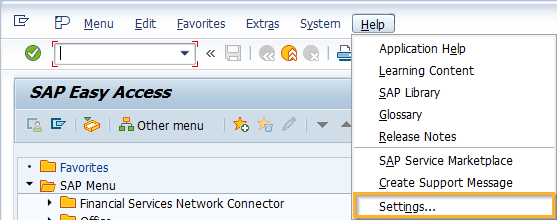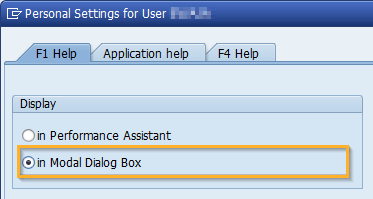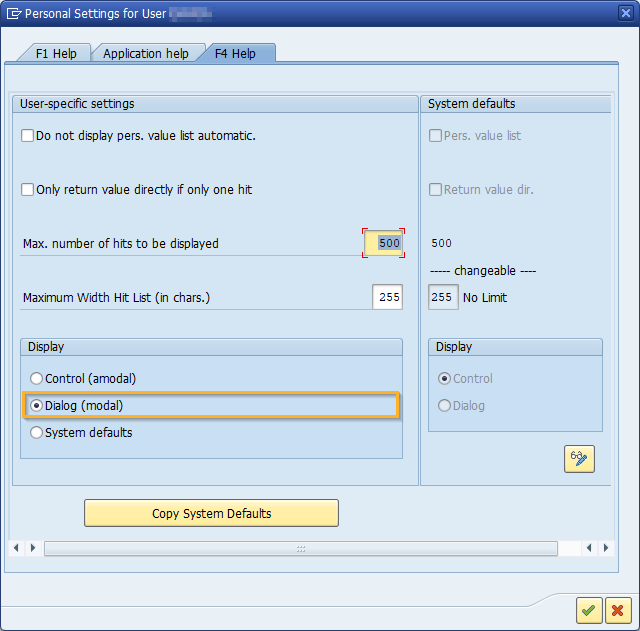SAP Engine 3.0
The Tricentis Tosca SAP Engine 3.0 allows you to test your SAP applications.
The installation of SAP Engine 3.0 is part of the Tricentis Tosca standard installation.
For information on software versions and hardware requirements, see the System Requirements.
To enable Tricentis Tosca to steer SAP applications, follow the steps below:
Activate scripting on the server
To steer SAP applications via the SAP scripting interface, you have to activate scripting on the server.
Before you can activate scripting in the system, you have to adjust the parameter sapgui/user_scripting in the profile file of the Application Server.
To do so, use the following line: sapgui/user_scripting = TRUE.

|
To prevent unintentional execution of automated tests in production, Tricentis recommends that you enable scripting only in:
|
To activate scripting on the server, follow the steps below:
-
Open transaction RZ10 or RZ11 in the system:
-
RZ10 if you want to activate scripting on the server permanently. After you restart the server, scripting is still enabled.
-
RZ11 if you want to activate scripting on the server temporarily. After you restart the server, scripting is set to your previous default.
-
-
Enter the parameter name sapgui/user_scripting and click Display.

Profile parameter maintenance in transaction RZ11
-
If the parameter value is currently set to FALSE, click the Change Value button in the toolbar.
-
In the subsequent dialog, enter the value TRUE (case-sensitive) and save your changes.

Parameter sapgui/user_scripting
-
Depending on the SAP version you use, other scripting parameters may be set. If one or more parameters from the list below are set, change their value to FALSE.
-
sapgui/nwbc_scripting
-
sapgui/user_scripting_disable_recording
-
sapgui/user_scripting_force_notification
-
sapgui/user_scripting_per_user
-
sapgui/user_scripting_set_readonly
-
Activate scripting on the client
To steer SAP applications via the SAP scripting interface, you have to activate scripting on the client.
To do so, follow the steps below:
-
In the Logon window, click the
 icon to open the menu and select Options.
icon to open the menu and select Options. -
Go to Accessibility & Scripting->Scripting and select the Enable scripting check box.
-
Clear the following check boxes: Notify when a script attaches to SAP GUI and Notify when a script opens a connection.

Enable scripting option
Activate modal dialog boxes on the client
To steer SAP applications, you have to activate the modal dialog boxes on the client.
To do so, follow the steps below:
-
Open the SAP GUI window and select the menu entry Help->Settings... on any screen.

SAP Help Settings
-
Go to the F1 Help tab and select the option in Modal Dialog Box in the Display section.

Display option in Personal Settings for User
-
Switch to the F4 Help tab and select the option Dialog (modal) in the Display section.

Personal Settings for User
-
To confirm, click the
 check mark button.
check mark button.

|
This is a per-user setting. You have to configure it on each client with which you want to test your application. An SAP system administrator can set the system default setting to Dialog (modal). |
Enable High Speed Connection (LAN)
To automate SAP with Tricentis Tosca, you have to ensure that the High Speed Connection (LAN) is selected in the connection properties. This option is enabled by default.
To ensure that the High Speed Connection (LAN) option is enabled, follow the steps below:
-
Right-click on the SAP connection you use for test automation and select Properties....
-
Go to the Network tab.
-
In the Network Settings section, ensure that the High Speed Connection (LAN) option is selected. If the Low Speed Connection (Reduced Network Traffic) option is selected, select the High Speed Connection (LAN) option instead.
-
Click OK to accept the changes.

Network Settings in the connection properties
Set a time-out for errors
Errors can cause SAP to stop responding for some time. In this case, Tricentis Tosca reaches the default time-out and sets the test result to failed.
To avoid this, specify the maximum time how long Tricentis Tosca should wait for SAP to respond. This configuration applies to SAP only. It doesn't override the default remote server response timeout.
Set an SAP time-out by adding a test configuration parameter. This parameter lets you specify a time-out for specific objects:
To do so, follow the steps below:
-
Create the test configuration parameter SAPTimeout for your selected object.
All objects within this object inherit this test configuration parameter.
-
In the Value column, enter a time value in seconds. This defines how long Tricentis Tosca must wait for SAP to respond.
-
Set the DataType to String.

SAPTimeout test configuration parameter set to 30 seconds